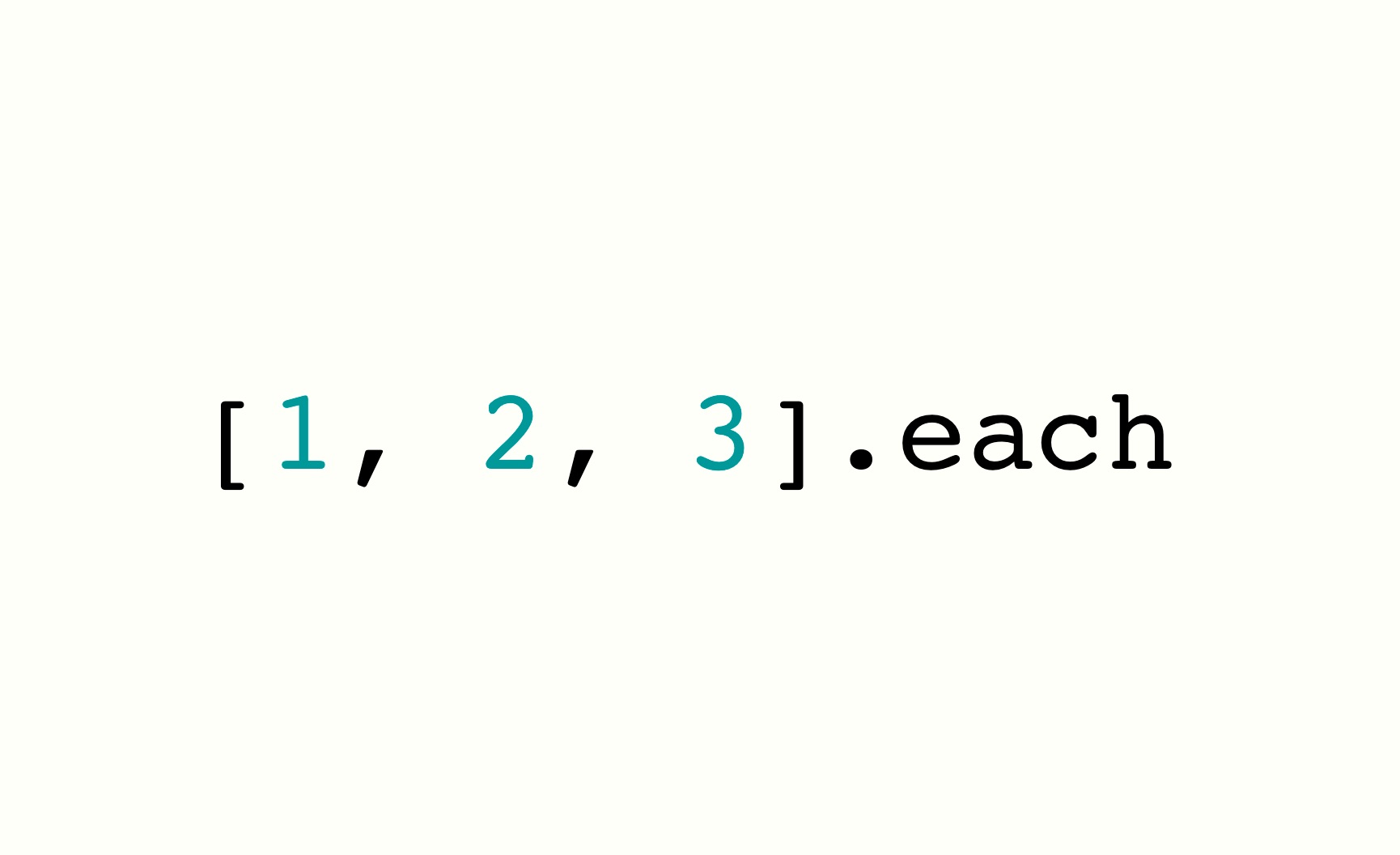What the Heck is a Ruby Enumerator?
Exploring Ruby Enumerators for fun and profit
Let's pretend we know about Ruby's Enumerable module - that it's included in
Ruby's core collection classes like Array and Hash and provides a bunch of
methods for traversal, searching and sorting, and that we can can introduce it
to plain old ruby classes through inclusion and implementing the #each method.
Check out this Enumerable primer if you'd like a refresher.
Enumerator is like Enumerable's kid sister; while Enumerable is getting all the attention, Enumerator should get more credit for doing amazing things in her own way. Well, it's time you took notice, Ma.
So what exactly is Enumerator? For one, it's a class. You can instantiate an
instance of Enumerator by calling certain Enumerable instance methods, like Array#each, without a block:
[1, 2, 3].each
=> #<Enumerator: [1, 2, 3]:each>
In fact, you can do this for many (but not all) of Array's Enumerable methods
that expect a block:
[1, 2, 3].map
=> #<Enumerator: [1, 2, 3]:map>
[1, 2, 3].select
=> #<Enumerator: [1, 2, 3]:select>
[1, 2, 3].reduce
LocalJumpError: no block given
Okay, big deal. What does this get us?
Instances of Enumerator are enumerable:
e = [1, 2, 3].map
e.each { |n| p n }
1
2
3
=> [nil, nil, nil]
See what happened there? The expression printed out each digit, but returned [nil, nil, nil] instead of of [1, 2, 3]. The Enumerator implemented map in the context of each; since p n returns nil, we got three entries of nil in the return value. We chained the behavior of two enumerable methods.
It's often useful to enumerate collection members along
with the index. We can use Enumerable#each_with_index, but we don't have
Enumerable#map_with_index. JavaScript forEach and map gets this right, but not Ruby... or does it?
We can chain enumerators together to get effectively the same result:
e = [1, 2, 3].map
e.each_with_index { |n, i| n * i }
=> [0, 2, 6]
The block receives each member of the original array along with its index
for each iteration. This usage is common enough, that Enumerator provides
with_index to give:
e = [1, 2, 3].map.with_index { |n, i| n * i }
=> [0, 2, 6]
Reads pretty well. What's really interesting here is that enumerators package up knowledge of a collection and a method with which we want to enumerate.
We can combine several enumerators in different orders to get different behaviors. Here's an nice example borrowed from another recent post on the subject:
letters = %w[a b c d e]
group_1 = letters.reverse_each.group_by.each_with_index do |item, index|
index % 3
end
group_2 = letters.reverse_each.each_with_index.group_by do |item, index|
index % 3
end
p group_1
=> {0=>["e", "b"], 1=>["d", "a"], 2=>["c"]}
p group_2
=> {0=>[["e", 0], ["b", 3]], 1=>[["d", 1], ["a", 4]], 2=>[["c", 2]]}
Enumerator provides some additional methods that allow for "external"
enumeration as well. With an enumerator instance, we can call next to get each
successive member of the collection.
Consider Enumerable#cycle. Calling "cycle" on an enumerable collection (without a limit arg) will enumerate over members of a collection ad nauseum. When implemented as an enumerator of css colors, we can use cycle to create striped table rows:
Project = Struct.new(:name)
colors = ['aliceblue', 'ghostwhite'].cycle
projects = [Project.new("TODO"),
Project.new("Work"),
Project.new("Home")]
require 'erb'
erb = (<<-ERB)
<table>
<% projects.each_with_index do |project, index| %>
<tr style="background: <%= colors.next %>">
<td><%= index + 1 %></td>
<td><%= project.name %></td>
</tr>
<% end %>
</table>
ERB
p ERB.new(erb).result(binding).gsub(/^$\n/, "")
=> '<table>
<tr style="background: aliceblue">
<td>1</td>
<td>TODO</td>
</tr>
<tr style="background: ghostwhite">
<td>2</td>
<td>Work</td>
</tr>
<tr style="background: aliceblue">
<td>3</td>
<td>Home</td>
</tr>
</table>'
Brilliant! Notice how, in each enumeration of project, we're calling colors.next. So external enumeration is one technique for enumerating more than one collection at a time.
Not all enumerators will enumerate forever. Using cycle with a limit will result
in a StopIteration error:
numbers = [1,2].cycle(1)
=> #<Enumerator: [1, 2]:cycle(1)>
numbers.next
# => 1
numbers.next
=> 2
numbers.next
StopIteration: iteration reached an end
The loop construct knows how to rescues from this error and treats it as a
break:
numbers = [1,2].cycle(1)
=> #<Enumerator: [1, 2]:cycle(1)>
loop do
p numbers.next
end
puts "Tada!"
1
2
=> nil
Tada!
=> nil
We can rewind enumerators or peek at their next values:
e = [1, 2, 3].each
e.next
=> 1
e.peek
=> 2
e.next
=> 2
e.rewind
=> #<Enumerator: [1, 2, 3]:each>
e.next
=> 1
So enumerators give us flexible and composable uses for enumerables. Combine them to extend behavior of existing enumerable methods. Use them for external enumeration with methods like #next and #peek for iterating over multiple arrays. In a future post, we'll take a look at how to create our own enumerators outside the context of arrays and hashes and some good reasons for doing so.
In case you missed it, check out my presentation in the previous post on the Enumerable module for more examples on how to get the most out of this terrific Ruby module.
